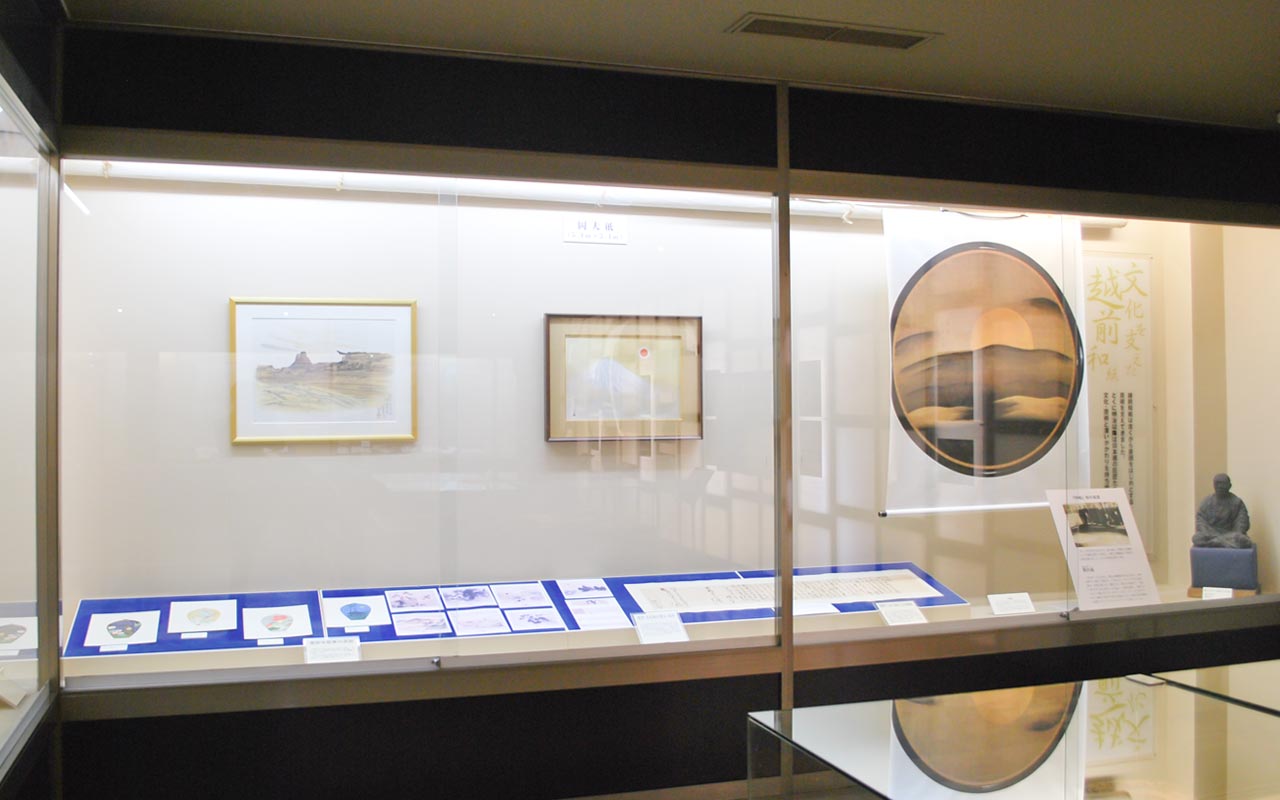 |
[15] Echizen Paper, Supporting Culture |

In addition to the information about the Living National Treasures, the display case also features washi paper made for Japan's artists, as well as works produced by artists, that you can learn about.
Echizen's craftspersons have produced paper to meet the needs of many artists. One of them, Iwano Heizaburo, researched the lost art of making the mashi hemp paper that once came from China, eventually reproducing it. This mashi paper was the start of a number of new types of paper particularly suited to writing and painting.
Especially since the Meiji era (1868–1912), paper makers and nihonga Japanese painting masters have worked together, and today many paper makers have cultivated deep, continuing relationships with modern artists.
|


|
In 1925, the famous painter Yokoyama Taikan placed an order for a piece of paper intended to be used for his work Meian ("Light and Darkness"). The paper maker Iwano Heizaburo then produced the paper, a giant square measuring 5.4 meters (17' 9") on each side. The ingredients were 30% hemp, 30% gampi shrub, and 40% Chinese bellflower, and when it was finished, it weighed 11.25 kilograms (24.8 lbs.). After the paper factory was improved, the process of actually producing this paper was said to take eight paper makers.
Incidentally, after it was produced, the sheer size of the paper led to it being mistaken for lumber during shipping, and so it wound up being left at a lumberyard in Tokyo for some time.
In memorial of the rebuilding of Waseda University's library, the painters Shimomura Kanzan and Yokoyama Taikan were commissioned to paint a mural to decorate the entrance hallway, resulting in the timeless masterpiece Meian. The two collaborated on the work, with Shimomura Kanzan painting the sun and Yokoyama Taikan painting clouds.
|

| Floor Map |

|

|



